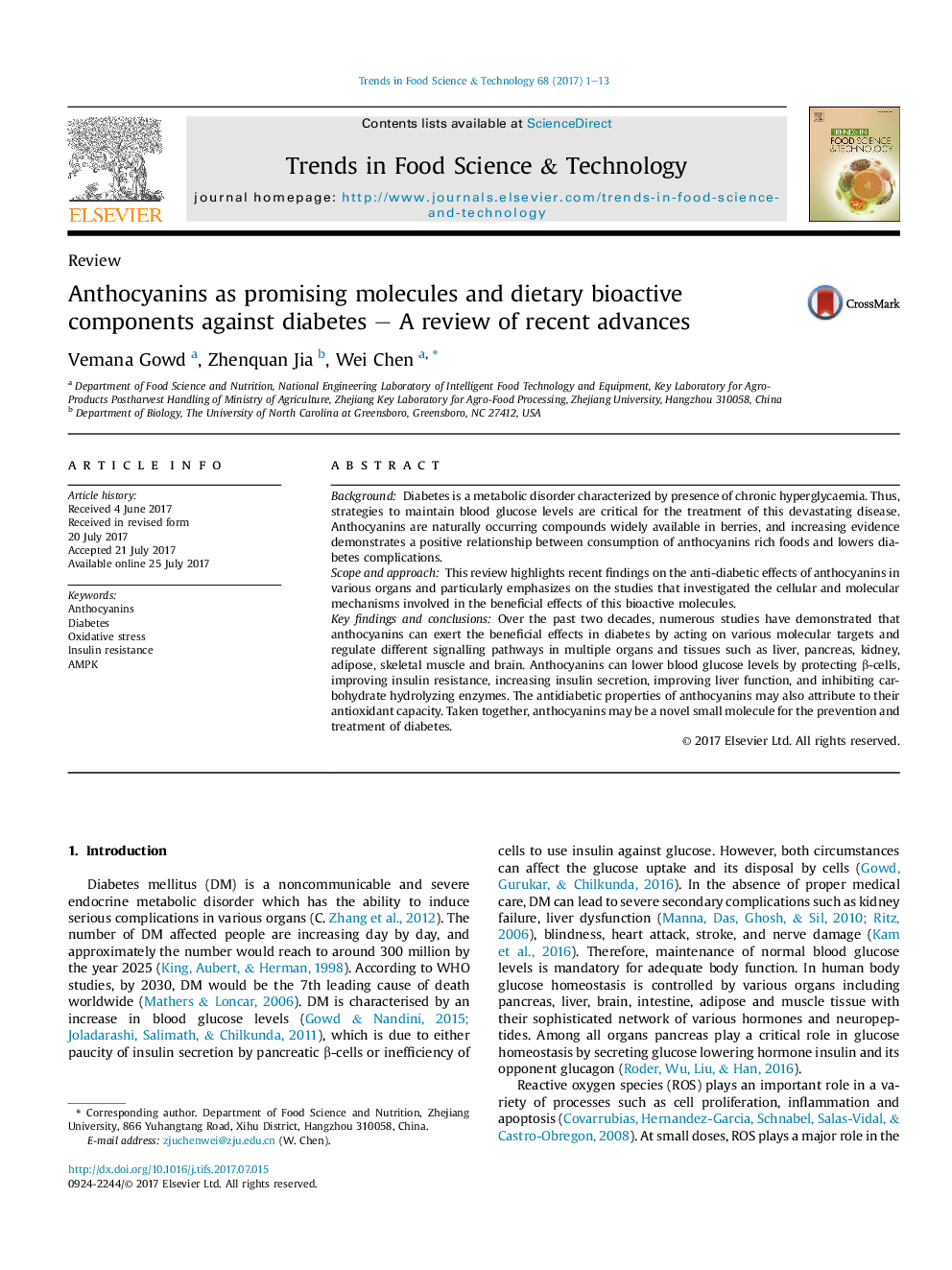| Article ID | Journal | Published Year | Pages | File Type |
|---|---|---|---|---|
| 5523619 | Trends in Food Science & Technology | 2017 | 13 Pages |
â¢Anthocyanins are naturally occurring compounds with potential anti-diabetic effect.â¢Antidiabetic effect of anthocyanins in various organs have been demonstrated.â¢The antidiabetic effect of anthocyanins is attributed to their antioxidant capacity.â¢Anthocyanins are potent carbohydrate hydrolysing enzyme inhibitors.â¢Anthocyanins can be potential drugs against diabetes and associated complications.
BackgroundDiabetes is a metabolic disorder characterized by presence of chronic hyperglycaemia. Thus, strategies to maintain blood glucose levels are critical for the treatment of this devastating disease. Anthocyanins are naturally occurring compounds widely available in berries, and increasing evidence demonstrates a positive relationship between consumption of anthocyanins rich foods and lowers diabetes complications.Scope and approachThis review highlights recent findings on the anti-diabetic effects of anthocyanins in various organs and particularly emphasizes on the studies that investigated the cellular and molecular mechanisms involved in the beneficial effects of this bioactive molecules.Key findings and conclusionsOver the past two decades, numerous studies have demonstrated that anthocyanins can exert the beneficial effects in diabetes by acting on various molecular targets and regulate different signalling pathways in multiple organs and tissues such as liver, pancreas, kidney, adipose, skeletal muscle and brain. Anthocyanins can lower blood glucose levels by protecting β-cells, improving insulin resistance, increasing insulin secretion, improving liver function, and inhibiting carbohydrate hydrolyzing enzymes. The antidiabetic properties of anthocyanins may also attribute to their antioxidant capacity. Taken together, anthocyanins may be a novel small molecule for the prevention and treatment of diabetes.
